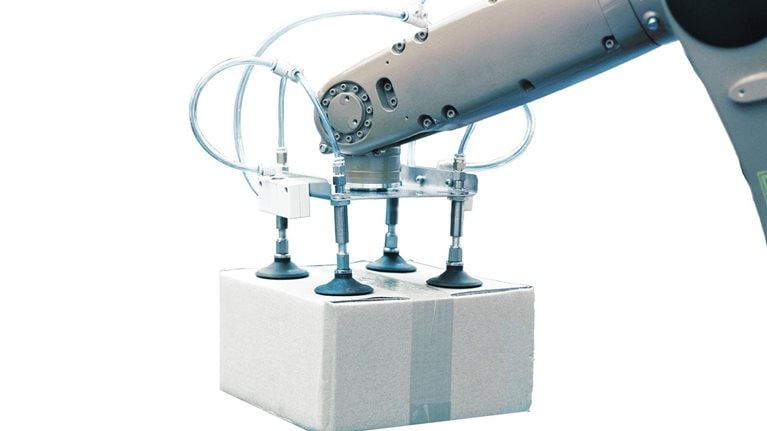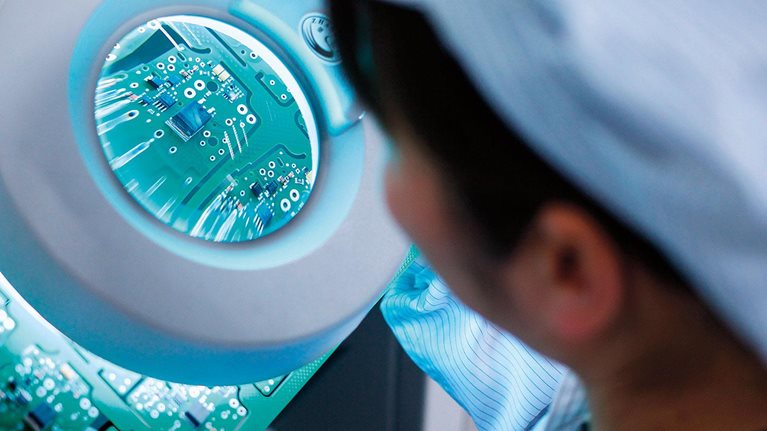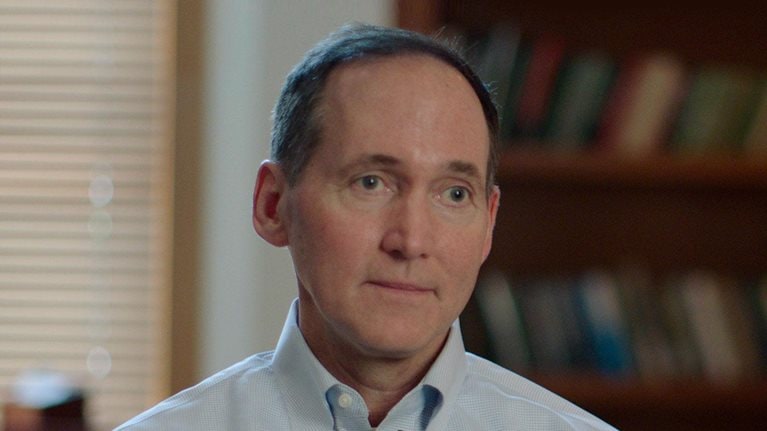WestRock, which is headquartered in Atlanta, has operations around the world and expertise in every shopping category. The company has created game-changing innovations in papermaking, packaging design, and retail solutions.
Video: An interview with WestRock’s Steve Voorhees
Interview
McKinsey: How has packaging changed over the past 15 years?
Steve Voorhees: Packaging has served three roles: protecting, promoting, and performing. With protection, needs have evolved as the channels for getting products to customers have changed, and we’ll continue to see new developments. Packaging’s role in promotion is growing in importance and helping our customers increase their sales. But the greatest changes relate to performance, and that will continue to be the case over the next five to ten years.
McKinsey: How is packaging performance evolving?
Steve Voorhees: First, sustainability is a much more important aspect of what we offer to customers. They like paper-based packaging because it’s made from renewable and recyclable resources. Customers also appreciate packaging that contains less material. Those changes help packaging perform its role in promoting sustainability.
Another part of performance relates to new technologies embedded in packaging that allow it to do far more than protecting and promoting products. For instance, consumers can get information about products by scanning labels on some packages.
McKinsey: That brings up another question. Is the new emphasis on sustainability primarily coming from your customers, or are consumers providing the major push?
Steve Voorhees: I think it’s driven by the consumers. Look at Earth Day last year, when there were pictures of plastic in the ocean. Consumers were very engaged. Now they’re saying, “What can I do, through my individual buying decisions, to help the environment?” For many people, not buying plastic is a way to help. Paperboard packaging nicely fits with this trend. And our customers respond to consumers. It’s a virtuous circle.
McKinsey: What is your company doing to increase sustainability?
Steve Voorhees: We’re very committed to sustainability at WestRock and we’re focused on giving our people opportunities to make a positive impact on the environment, including within the communities where we operate. We have specific sustainability goals and we track our progress closely.
We have a great paper R&D area, and the discoveries allow us to design paper packages that replace plastics across the board. There are many opportunities to do this in different markets—we’ve done many replacements in beverage over the past few years. We anticipate that there will be more opportunities to replace plastic with paper.
McKinsey: How do you think governments will support the push for sustainable packaging?
Steve Voorhees: I think the consumers are going to encourage governments to take action. It’s the same as what is happening with our customers, where consumers are showing their support for sustainability by purchasing products that minimize waste.
McKinsey: Now let’s move to another topic. We’ve seen a lot of mergers and acquisitions within packaging recently. Do you think the consolidation is contributing to the higher returns that we’re seeing?
Steve Voorhees: I think companies are benefitting more from scale than consolidation. Some people might say that there is no distinction, since scale results from consolidation, but there is one. As companies become larger, they can serve customers more economically, with a broader range of paper and packaging products. The larger size allows them to be more efficient when trying to meet customer needs. At WestRock, scale is definitely one of our advantages. Our comprehensive portfolio of paper and packaging products works to our advantage.
McKinsey: You like to use the expression “Preparation meets opportunity.” Can you talk a bit about how have you capitalized on acquisition opportunities and new technologies?
Steve Voorhees: If you’re prepared, you can take advantage of opportunities when they arise. At WestRock, we’ve designed our organization to be prepared, and we’ve built the capabilities needed to capture opportunities. And we’ll continue to build our capabilities and our business for a long time into the future.
McKinsey: Are you looking at both organic and inorganic opportunities to build capabilities, or are you focusing mostly on M&A?
Steve Voorhees: We’re building capabilities organically more than ever before. We’ve taken that stance since we built WestRock through the merger of two companies, about four years ago. Now we’re reaping the benefits. Of course, we still have the opportunity to grow via acquisition and obtain new capabilities, but the next several years will mostly involve organic growth. We’ll benefit from the capabilities that we’ve built as an organization to meet the needs of our customers.
McKinsey: Even before M &A was popular in packaging, WestRock was very successful in acquiring companies. What’s your approach in aligning organizations and cultures after an acquisition?
Steve Voorhees: Well, we’ve learned from experience, since not all of our acquisitions have been successful with respect to integration. We’ve built a framework to integrate companies and welcome them into WestRock. And the core of that is our values and our vision and our behaviors.
We want all of our teammates to feel engaged and comfortable in their work. But the mechanics of any individual integration are very much situational. The best way to integrate a new company, particularly with respect to systems, culture and processes, will vary.
McKinsey: Why is cultural integration so difficult for many companies?
Steve Voorhees: I think it’s really hard to listen. There’s a tendency for people to say, “I’d love to share my ideas with you” when they are speaking to staff from an acquired company. Instead, they should ask, “What are the best things that I can learn from you?” They’ll find that people are willing to share their views. You really have to create a situation in which both sides listen to each other. If you can do that, people from both companies will share ideas and end up with better results than either would attain on their own. If the companies don’t listen to each other, you’re not going to end up with a very good result.
McKinsey: Beyond scale that companies often achieve through M&A, what are some other important value drivers for packaging companies?
Steve Voorhees: The other major value driver is innovation—the application of technology in manufacturing, design, and administrative processes. Technology and innovation feed each other, and they’re both enhanced by scale. They’ll be the main drivers of value in the future.
McKinsey: We are living in a world of massive disruption brought on by technologies like blockchain and the Internet of Things. What are the implications for the packaging industry and for companies like WestRock?
Steve Voorhees: Technology is having a tremendous impact on society and industry. At WestRock, we’re embracing that by looking at digital and determining how it can make our business more effective. Take product design. There are many opportunities to use technology to improve product design and create packaging that customers really want. And within operations, there are multiple opportunities to use innovative technologies—we can change everything from how we measure our product to our printing methods. We’re also using digital tools to improve how we recruit, attract, and retain employees.
McKinsey: What’s your vision for connected packaging and how will WestRock support its evolution?
Steve Voorhees: It’s an opportunity for us to continue to add value to our packaging. Look at a product we created for 19 Crimes. Each package has a picture of a convict who was transported to Australia for crimes committed in England in the 1700s and 1800s. If you download an app, you can point it at the package and hear the criminals come to life and tell their story. There are also some other interactive features. That’s an experience you can only get from connected packaging.
Connected packaging also creates great opportunities to reach customers in stores. If we connect at the store, we might have the opportunity to convince customers to buy our product.
McKinsey: Investing in new technologies costs money. How do you ensure a good return on investment on packaging innovations?
Steve Voorhees: We focus on packaging innovations related to four value drivers that are important to our customers. The first two involve increasing sales and reducing total costs. And for costs, we’re not just talking about the price of packaging. We’re trying to reduce costs in any way possible, and sometimes the savings we help customers obtain are higher than the cost of the package itself. Beyond sales and costs, we invest in technologies that will minimize risk. Those technologies help ensure that we can deliver complete orders on time, and we’ve been very successful with that. Last, we focus on innovations that will help customers meet their sustainability goals.
As I noted, paper-based packaging can take them a long way toward that goal. Customers are very grateful for the value of our products, and we have a good relationship with them.
The future of packaging: Smart bottles, edible boxes
McKinsey: How has WestRock increased the proportion of recurring revenues? That’s one of the biggest drivers of a metric that we term Quality of Revenue.
Steve Voorhees: I think we’ll have an increase in recurring revenue at WestRock because we’re getting better at providing differentiated solutions to our customers. We have the world’s most comprehensive portfolio of paper and packaging, and we’re creating customized solutions that our customers appreciate. That will encourage them to continue working with us. Our customer retention rate has improved significantly in recent years.
McKinsey: There’s an advantage to being a first mover with new technologies, since you get to set the standards and drive change. But there’s also some risk because you don’t know the potential returns. How do you make decisions about how much you should invest in the core business and how much you should invest in innovative technologies?
Steve Voorhees: That’s another great question because those choices are becoming more stark. There’s not a perfect answer to that question, beyond saying that you need to look at the alternatives, set priorities, and make judgments. That’s what we do at WestRock.
As we look at the future, technology will become more of a given within packaging. Ten years from now, technology will play an even greater role than it does now. I think that’s an important consideration as we look at ways to build our company. If we have to choose between investing in new technology and hard assets, we might be more likely to choose technology.
McKinsey: There’s a general sense that a publicly listed company or publicly traded companies can’t take a lot of risk because the market won’t allow it. Would you agree?
Steve Voorhees: I think it depends on the risk. Our investors are very knowledgeable and understand our business. If we can make a case that it’s an appropriate risk to take, our investors will support it. We pay attention to their concerns, and I think we’ve been successful.
McKinsey: Many packaging companies are working more closely with their customers, especially big tech companies, on packaging solutions. How do you see this trend evolving over the next three to five to ten years?
Steve Voorhees: I think the line between packaging companies and customers will become increasingly blurred. Technology is affecting all aspects of society and business. We’re going to be investing in new packaging technologies, and tech companies might explore that as well. Companies like WestRock, which have scale, will have the resources to invest in new technologies.
McKinsey: What impact will Millennials have on packaging? They shop much differently than older consumers.
Steve Voorhees: Actually, I think the way all customers shop, whether they’re Generation X, Generation Z, or Millennials, is changing in response to technology, the advent of mobile phones, and e-commerce. That creates great opportunities for packaging companies that have the scale to be able to respond to those trends.
Our challenge is to identify those needs and be the first to meet them.
McKinsey: What do you see as the biggest opportunity and the challenge for the packaging industry over the next five years?
Steve Voorhees: Integrating technology into business in a way that reflects market needs.
McKinsey: What’s your greatest learning as CEO?
Steve Voorhees: You must stay focused on what’s important, and that obviously includes your job. But it’s also family and faith. You need a strong foundation. You will have good days and bad days, but having a strong foundation of support and consistent beliefs will get you through. Actually, I think I knew these things coming into my position, so I’m not sure I’d call it a learning. But it has become more true as time’s passed.
McKinsey: Many people know you as a CEO. What are a few things they don’t know about your life outside of work?
Steve Voorhees: They might not know that I love music. There are so many great songs out there. If you don’t know Florence and the Machine, you’re missing out.
For more on this topic, see The future of packaging: Smart bottles, edible boxes.


